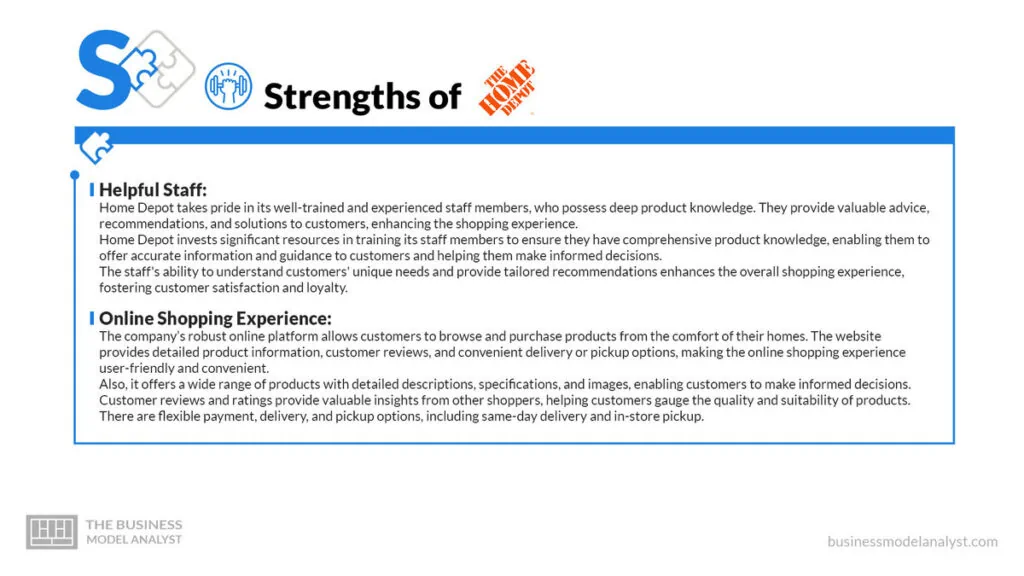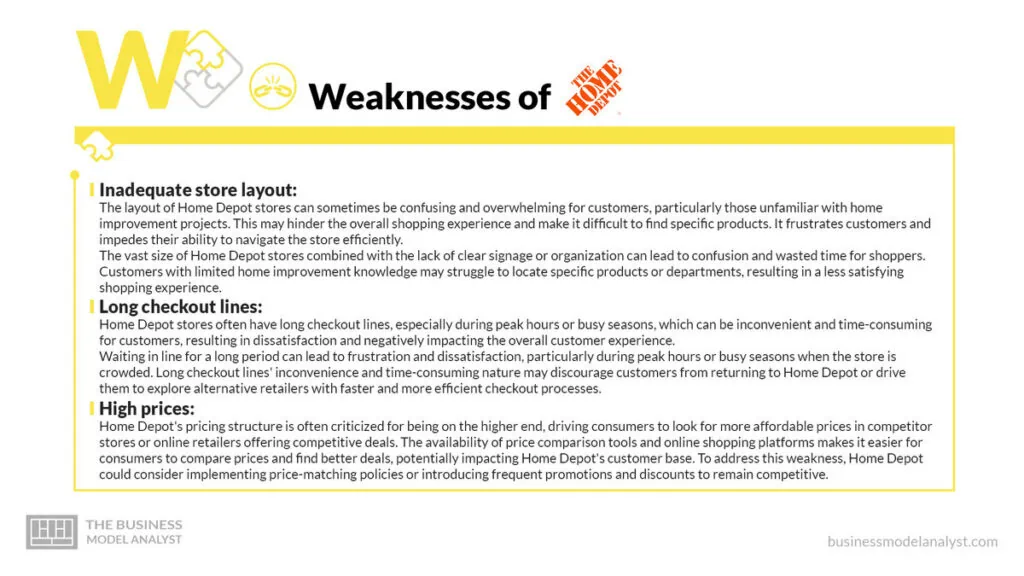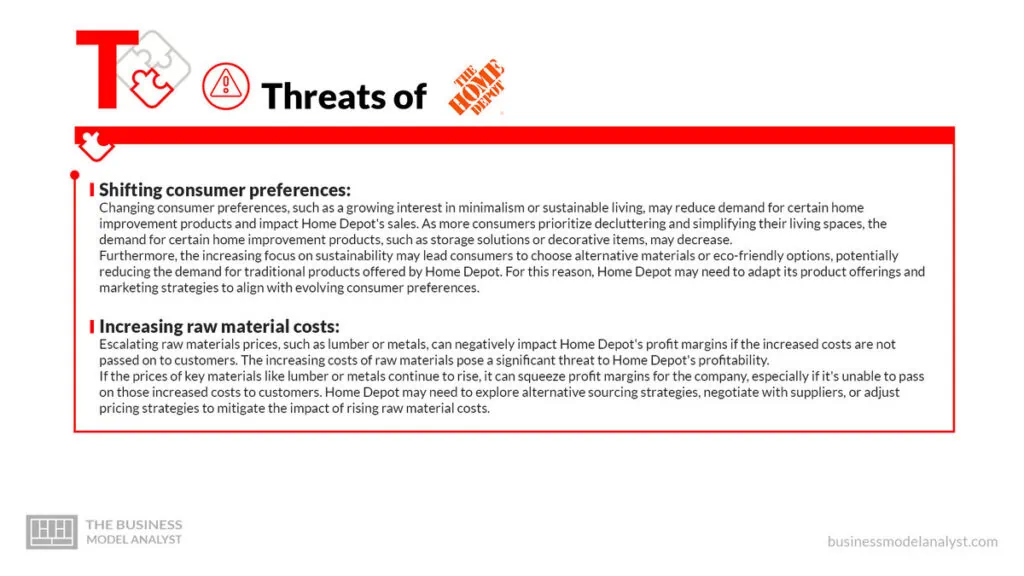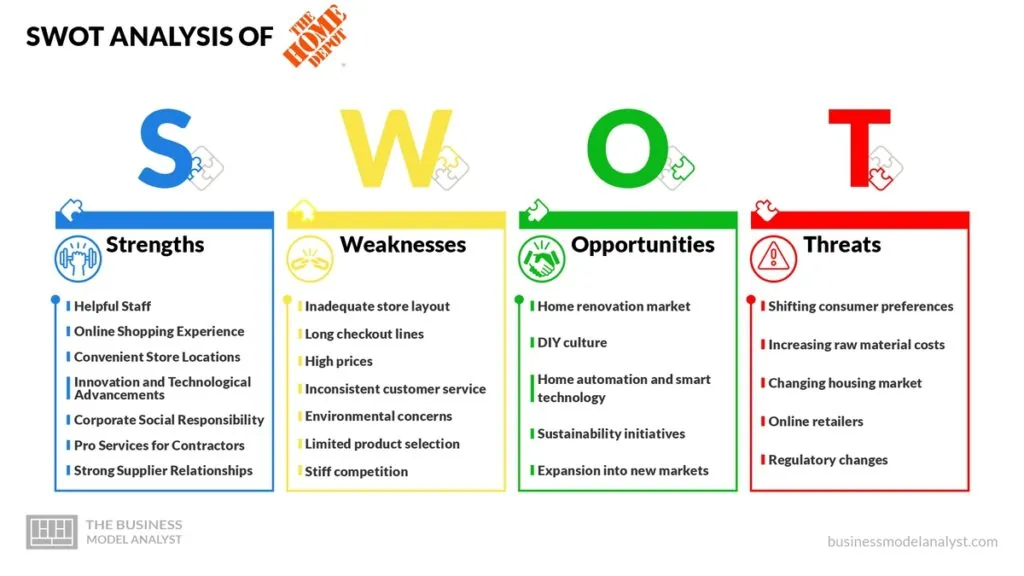Home Depot, one of the world’s largest home improvement retailers, has established itself as a trusted brand in the industry since its inception. This American company, founded on June 22, 1978, by Bernie Marcus and Arthur Blank, has become synonymous with high-quality products, exceptional customer service, and a vast selection of tools, building materials, and home improvement supplies. With its headquarters in Atlanta, Georgia, Home Depot operates a network of stores across the United States, Canada, and Mexico.
The company is committed to providing homeowners, contractors, and do-it-yourself enthusiasts with everything they need to enhance their living spaces. From construction materials and appliances to gardening tools and home décor, the company offers a comprehensive range of products to cater to diverse customer needs. With a strong emphasis on customer satisfaction, Home Depot has built a reputation for its knowledgeable staff, convenient store layouts, and online shopping experience.
Throughout its history, Home Depot has achieved remarkable success. It has consistently expanded its store count and revenue, cementing its position as a market leader in the home improvement industry. Moreover, the company has actively invested in innovative technologies, such as online ordering, augmented reality, and smart home solutions, to stay ahead of the curve.
However, like any large corporation, Home Depot faces several challenges. Competition from online retailers and other home improvement chains and fluctuations in the housing market pose ongoing challenges.
Nonetheless, the company continues to adapt and evolve, focusing on providing exceptional customer service, expanding its product offerings, and embracing new technologies to maintain its industry dominance. Home Depot’s commitment to excellence and ability to navigate these challenges has solidified its position as a go-to destination for all things related to home improvement.
Below, there is a detailed Home Depot SWOT Analysis to better understand its strengths, weaknesses, opportunities, and threats in the global market.
Contents
Home Depot Strengths

Home Depot’s strengths partly lie in its extensive product selection, catering to various customer needs and preferences. The company offers a one-stop shop for all home improvement requirements with various tools, building materials, appliances, and home decor options. Below, there are more details about the company’s strengths.
Helpful Staff
Home Depot takes pride in its well-trained and experienced staff members, who possess deep product knowledge. They provide valuable advice, recommendations, and solutions to customers, enhancing the shopping experience.
Home Depot invests significant resources in training its staff members to ensure they have comprehensive product knowledge, enabling them to offer accurate information and guidance to customers and helping them make informed decisions.
The staff’s ability to understand customers’ unique needs and provide tailored recommendations enhances the overall shopping experience, fostering customer satisfaction and loyalty.
Online Shopping Experience
The company’s robust online platform allows customers to browse and purchase products from the comfort of their homes. The website provides detailed product information, customer reviews, and convenient delivery or pickup options, making the online shopping experience user-friendly and convenient.
Also, it offers a wide range of products with detailed descriptions, specifications, and images, enabling customers to make informed decisions. Customer reviews and ratings provide valuable insights from other shoppers, helping customers gauge the quality and suitability of products. There are flexible payment, delivery, and pickup options, including same-day delivery and in-store pickup.
Convenient Store Locations
Home Depot has strategically positioned its stores across the United States, Canada, and Mexico, making them accessible to a broad customer base. Its convenient locations ensure easy access to products and services for homeowners, contractors, and DIY enthusiasts in urban and suburban areas. They save customers time and effort by providing a nearby destination for their home improvement needs, fostering convenience and accessibility.
Innovation and Technological Advancements
Another strength of Home Depot is leveraging technology to enhance the customer experience and invest in innovations like augmented reality tools, smart home solutions, and digital platforms, providing customers with cutting-edge options and convenience. Its commitment to innovation and technological advancements sets it apart in the home improvement industry.
It enhances the shopping experience by allowing customers to visualize how products will look in their homes before purchasing. Also, the company’s investment in smart home solutions enables customers to create connected and automated living spaces, adding convenience and efficiency to their homes.
Corporate Social Responsibility
Home Depot engages with local communities through philanthropic initiatives, volunteer programs, and disaster relief efforts. The community engagement and corporate social responsibility initiatives demonstrate their dedication to making a positive impact beyond just its business operations.
The company supports local communities and organizations through philanthropic initiatives, such as charitable donations and grants, addressing various social and environmental needs. In times of disaster, its swift response and support through relief efforts highlight its commitment to helping communities in need, further solidifying its brand image as a responsible and caring corporate citizen.
Pro Services for Contractors
Recognizing the needs of professional contractors, Home Depot offers specialized services tailored to their requirements, including dedicated sales representatives, bulk purchasing options, and delivery services catering to the unique needs of the construction industry. Its Pro Services cater specifically to the needs of professional contractors, acknowledging their distinct requirements.
The company provides dedicated sales representatives with expertise in assisting contractors with their specific project needs, offering tailored guidance and solutions. Moreover, it offers bulk purchasing options, allowing contractors to efficiently procure the necessary materials for their projects at competitive prices.
Strong Supplier Relationships
In addition, Home Depot maintains strong relationships with a vast network of suppliers, ensuring a steady and diverse supply of high-quality products and allowing the company to offer competitive pricing and effectively meet customer demands.
Through these relationships, Home Depot maintains a steady and reliable supply chain, ensuring that products are consistently available to meet customer demands. Furthermore, these strong partnerships allow Home Depot to negotiate competitive pricing, providing customers with value for their money and maintaining a competitive edge in the market.
Wide Product Selection
Home Depot boasts an impressive range of products, including tools, building materials, appliances, lighting fixtures, home decor, and more. Its vast inventory caters to diverse customer needs, ensuring a comprehensive shopping experience. The company’s vast product selection is a significant strength that differentiates it from competitors.
With a diverse range of products, customers can find everything they need for their home improvement projects under one roof. The vast inventory also offers various options for different tastes, styles, and budgets, whether it’s power tools, lumber, kitchen appliances, or decorative items.
Strong Brand Reputation
Home Depot has established itself as a trusted and recognized brand with decades of operation. Its commitment to quality products, exceptional customer service, and reliable expertise have earned it a loyal customer base. Its strong brand reputation is a testament to its consistent delivery of quality products and exceptional customer service.
The company’s commitment to providing reliable expertise and guidance has built trust among customers, who rely on Home Depot for their home improvement needs. This trust and loyalty have translated into a solid customer base that continues to choose Home Depot as their go-to destination for home improvement projects.
Home Depot Weaknesses

Home Depot faces stiff competition from other home improvement retailers, such as Lowe’s, which can impact its market share and revenue. The intense competition pressures Home Depot to continually innovate and differentiate itself to attract and retain customers. Here are more details about Home Depot’s weaknesses.
Inadequate store layout
The layout of Home Depot stores can sometimes be confusing and overwhelming for customers, particularly those unfamiliar with home improvement projects. This may hinder the overall shopping experience and make it difficult to find specific products. It frustrates customers and impedes their ability to navigate the store efficiently.
The vast size of Home Depot stores combined with the lack of clear signage or organization can lead to confusion and wasted time for shoppers. Customers with limited home improvement knowledge may struggle to locate specific products or departments, resulting in a less satisfying shopping experience.
Long checkout lines
Home Depot stores often have long checkout lines, especially during peak hours or busy seasons, which can be inconvenient and time-consuming for customers, resulting in dissatisfaction and negatively impacting the overall customer experience.
Waiting in line for a long period can lead to frustration and dissatisfaction, particularly during peak hours or busy seasons when the store is crowded. Long checkout lines’ inconvenience and time-consuming nature may discourage customers from returning to Home Depot or drive them to explore alternative retailers with faster and more efficient checkout processes.
High prices
Home Depot’s pricing structure is often criticized for being on the higher end, driving consumers to look for more affordable prices in competitor stores or online retailers offering competitive deals. The availability of price comparison tools and online shopping platforms makes it easier for consumers to compare prices and find better deals, potentially impacting Home Depot’s customer base. To address this weakness, Home Depot could consider implementing price-matching policies or introducing frequent promotions and discounts to remain competitive.
Inconsistent customer service
The variability in service quality from store to store and employee to employee can create a sense of uncertainty and frustration among customers. Unhelpful or uninformed staff members can make it difficult for customers to receive the assistance they need, leading to delays, mistakes, and a lack of confidence in the company’s ability to meet their needs.
Addressing this inconsistency in customer service and investing in comprehensive training programs can significantly improve customer satisfaction and loyalty for Home Depot. More so, implementing feedback systems to gather customer input and promptly address any service-related issues can help the company identify areas of improvement and enhance the overall customer experience.
Environmental concerns
The company’s use of unsustainable materials, high energy consumption, and inadequate waste management practices have drawn criticism from environmental advocates and conscious consumers. Failing to address these concerns can negatively impact Home Depot’s reputation and limit its appeal to customers prioritizing sustainability and eco-friendly practices.
Therefore, Home Depot needs to implement more robust environmental initiatives, promote transparency in its sustainability efforts, and align itself with the growing demand for environmentally responsible businesses.
Limited product selection
While Home Depot offers a wide range of home improvement products, it has limited variety compared to specialized retailers, who often focus on niche categories and offer more variety. As a result, customers with unique or specific needs may find that Home Depot does not have the specialized products they require.
This limitation could lead customers to seek out alternative retailers catering to their specific demands, potentially resulting in lost sales for Home Depot. As such, Home Depot could consider expanding its partnerships with specialized vendors or exploring opportunities to broaden its product range in niche categories.
Stiff competition
The home improvement retail industry competition, particularly from Lowe’s, poses a significant challenge for Home Depot. Both companies compete for the same customer base and strive to offer competitive pricing, product selection, and customer experience. This intense rivalry can result in price wars and aggressive marketing campaigns, impacting Home Depot’s market share and revenue.
To stay ahead, Home Depot must continually innovate and differentiate itself in this competitive landscape. This can involve introducing new product lines, enhancing its online presence, improving customer service, and investing in exclusive partnerships or brand collaborations.
Home Depot Opportunities

One of the opportunities Home Depot can utilize is home renovation and improvement projects to cater to the growing demand for comprehensive solutions, specialized services, and expert guidance. Here are more details.
Home renovation market
With increasing homeowners investing in home renovation and improvement projects, Home Depot can tap into this market by offering comprehensive solutions, specialized services, and expert guidance to cater to customers’ needs. The home renovation market presents a significant opportunity for Home Depot to expand its customer base and increase sales.
By providing comprehensive solutions, Home Depot can become a one-stop shop for homeowners, offering everything they need for their renovation projects, including a wide range of products, from building materials and tools to kitchen and bathroom fixtures.
In addition, it can leverage its expertise and knowledge by offering specialized services such as in-store consultations, design services, and project planning assistance to guide customers through their renovation journey.
DIY culture
The popularity of do-it-yourself (DIY) projects presents Home Depot with resources, workshops, and tutorials to empower and support customers in their DIY endeavors. Creating a community-driven platform or hosting in-store DIY events can enhance customer engagement and loyalty.
The DIY culture offers Home Depot a unique opportunity to engage with customers and support their DIY projects. Home Depot can provide resources, workshops, and tutorials to empower customers with the knowledge and skills they need to complete their DIY endeavors.
Creating a community-driven platform, such as an online forum or social media group, can foster a sense of belonging and allow customers to connect, share their projects, and seek advice from fellow DIY enthusiasts.
Home automation and smart technology
The increasing demand for smart home technology presents an opportunity for Home Depot to offer a wide range of smart home devices and provide installation and integration services that can attract tech-savvy customers.
The rising popularity of smart home technology opens up a promising opportunity for Home Depot to become a go-to destination for customers seeking smart home solutions. By expanding its selection of smart home devices, such as smart locks, thermostats, and lighting systems, Home Depot can cater to the growing demand for home automation.
Also, offering professional installation and integration services can provide convenience and peace of mind for customers needing assistance setting up and optimizing their smart home systems.
Sustainability initiatives
Home Depot has the opportunity to improve its environmental practices and position itself as a leader in sustainability within the home improvement industry. Implementing green initiatives, such as promoting energy-efficient products, eco-friendly materials, and responsible waste management, can attract environmentally conscious customers.
Emphasizing sustainability initiatives presents a significant opportunity for Home Depot to align with the growing consumer demand for eco-friendly practices. Home Depot can help customers reduce their environmental footprint while saving on energy costs by promoting energy-efficient products, such as LED lighting and smart thermostats.
Furthermore, offering a wide selection of eco-friendly building materials, such as recycled or sustainably sourced products, can attract customers who prioritize environmentally responsible choices in their home improvement projects.
Expansion into new markets
Home Depot can explore opportunities to expand its operations into new geographic markets with a limited presence or absence, including targeting emerging economies or regions with high potential for growth in the home improvement industry.
This way, Home Depot can tap into untapped customer bases and drive revenue growth. It can also establish a strong foothold in new markets by targeting emerging economies or regions with a high potential for growth in the home improvement industry.
This expansion can involve adapting to local preferences, tailoring product offerings, and building partnerships with local suppliers to ensure relevance and competitiveness in each new market.
Home Depot Threats

A major threat to Home Depot is economic downturns and fluctuations in the housing market, which may reduce their spending on home improvement projects, impacting Home Depot’s sales and revenue. Other threats include:
Shifting consumer preferences
Changing consumer preferences, such as a growing interest in minimalism or sustainable living, may reduce demand for certain home improvement products and impact Home Depot’s sales. As more consumers prioritize decluttering and simplifying their living spaces, the demand for certain home improvement products, such as storage solutions or decorative items, may decrease.
Furthermore, the increasing focus on sustainability may lead consumers to choose alternative materials or eco-friendly options, potentially reducing the demand for traditional products offered by Home Depot. For this reason, Home Depot may need to adapt its product offerings and marketing strategies to align with evolving consumer preferences.
Increasing raw material costs
Escalating raw materials prices, such as lumber or metals, can negatively impact Home Depot’s profit margins if the increased costs are not passed on to customers. The increasing costs of raw materials pose a significant threat to Home Depot’s profitability.
If the prices of key materials like lumber or metals continue to rise, it can squeeze profit margins for the company, especially if it’s unable to pass on those increased costs to customers. Home Depot may need to explore alternative sourcing strategies, negotiate with suppliers, or adjust pricing strategies to mitigate the impact of rising raw material costs.
Changing housing market
Fluctuations in the housing market, such as a slowdown in new construction or a decline in home sales, can reduce demand for home improvement products and services. Homeowners may delay or scale back on renovation projects during uncertain or stagnant housing market conditions, leading to decreased Home Depot sales.
To mitigate this threat, Home Depot should focus on diversifying its offerings and targeting other customer segments, such as contractors or property investors, whose fluctuations in the housing market may have less impact.
Online retailers
E-commerce giants like Amazon threaten Home Depot, offering a wide range of home improvement products online with competitive pricing and convenient delivery options. Amazon’s broad product selection, competitive pricing, and efficient delivery options attract customers seeking convenience and value.
To counter this, Home Depot must continue to invest in its e-commerce platform, enhance the online shopping experience, and differentiate itself through personalized customer service and specialized product offerings posed by online retailers.
Regulatory changes
Changes in building codes, environmental regulations, or trade policies can impact Home Depot’s operations and require adjustments to comply with new requirements, potentially increasing costs and reducing efficiency. Changes in building codes and environmental regulations may necessitate modifications to product offerings or store practices, potentially increasing costs for Home Depot.
In addition, shifts in trade policies or tariffs can impact the supply chain, affecting the availability and cost of imported products, which may further impact Home Depot’s operations and financial performance.
Conclusion
Home Depot is a prominent player in the home improvement retail industry, offering a wide range of products and services to cater to the needs of homeowners, contractors, and DIY enthusiasts. The company has established a strong presence in the United States and continues to grow its customer base through its extensive store network and e-commerce platform.
However, it faces various challenges and weaknesses that it must address to maintain its competitive edge. Key weaknesses include inconsistent customer service, limited product selection compared to specialized retailers, and reliance on physical stores in an increasingly digital age. These areas require attention and improvement to enhance the overall customer experience and meet evolving consumer preferences.
On the other hand, Home Depot has several significant opportunities to capitalize on, such as the home renovation market, sustainability initiatives, the DIY culture, and the growing demand for home automation. By leveraging these opportunities, Home Depot can attract new customers, build customer loyalty, and drive revenue growth.
To mitigate threats from intense competition, online retailers, economic downturns, shifting consumer preferences, and other factors, Home Depot must continuously innovate, adapt to changing market trends, and invest in its online presence, customer service, and specialized offerings.
Home Depot remains a dominant player in the home improvement industry. With strategic planning, customer-centric approaches, and adaptation to emerging trends, the company can maintain its market leadership and continue its growth trajectory.


